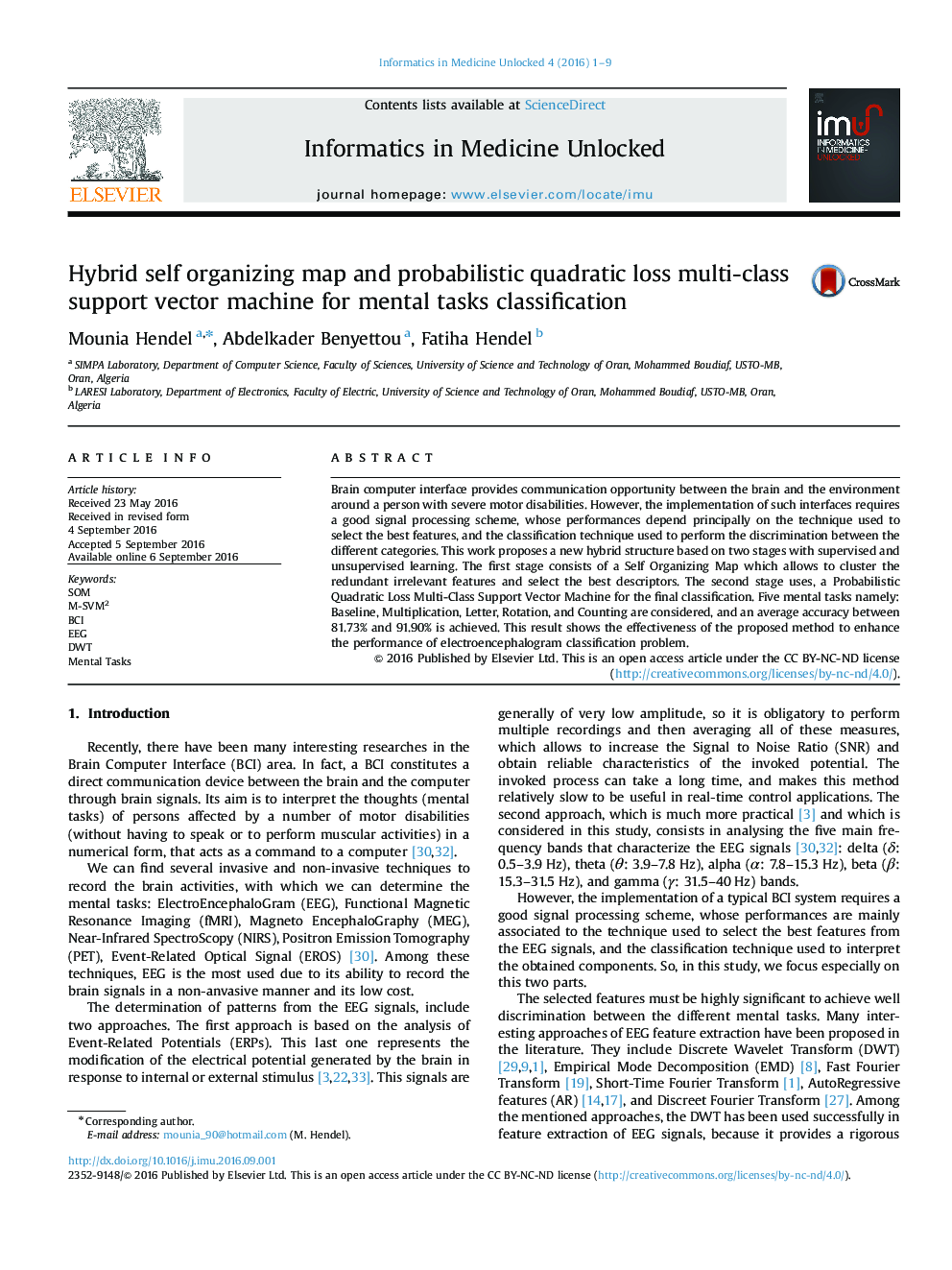| Article ID | Journal | Published Year | Pages | File Type |
|---|---|---|---|---|
| 4960308 | Informatics in Medicine Unlocked | 2016 | 9 Pages |
Brain computer interface provides communication opportunity between the brain and the environment around a person with severe motor disabilities. However, the implementation of such interfaces requires a good signal processing scheme, whose performances depend principally on the technique used to select the best features, and the classification technique used to perform the discrimination between the different categories. This work proposes a new hybrid structure based on two stages with supervised and unsupervised learning. The first stage consists of a Self Organizing Map which allows to cluster the redundant irrelevant features and select the best descriptors. The second stage uses, a Probabilistic Quadratic Loss Multi-Class Support Vector Machine for the final classification. Five mental tasks namely: Baseline, Multiplication, Letter, Rotation, and Counting are considered, and an average accuracy between 81.73% and 91.90% is achieved. This result shows the effectiveness of the proposed method to enhance the performance of electroencephalogram classification problem.
